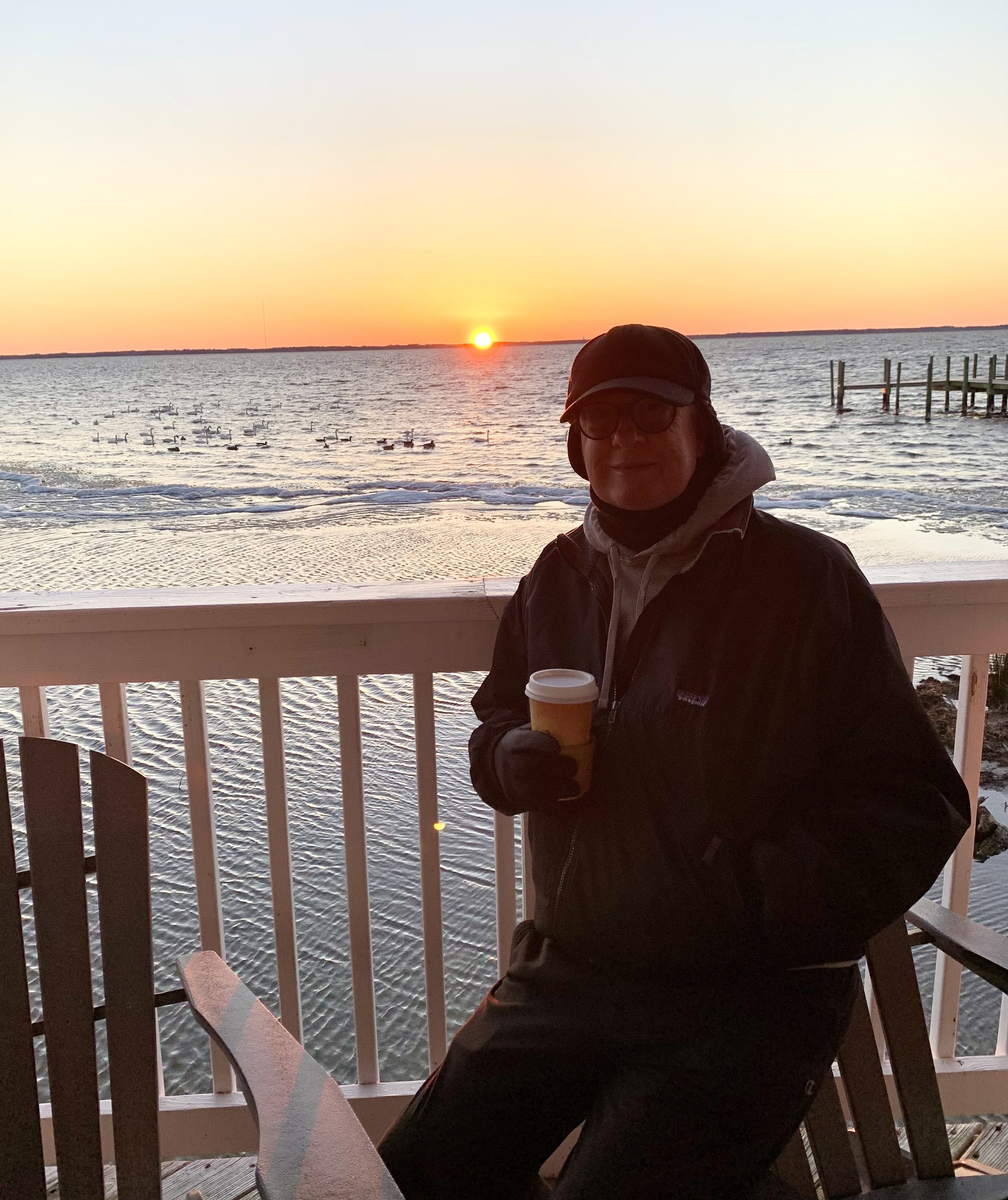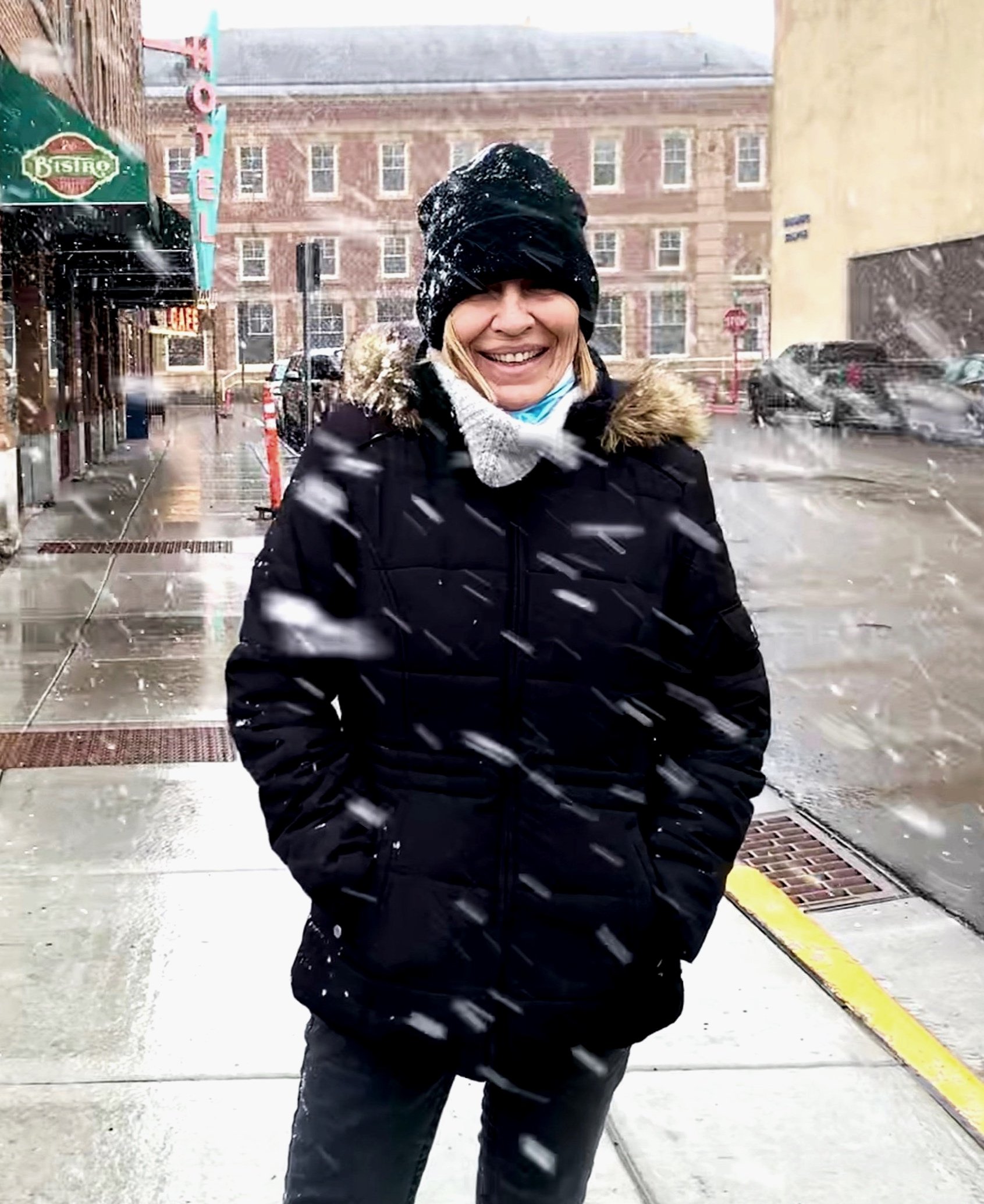Back to the Great Outdoors and the American West
Even those of us lucky enough to avoid the seemingly random ravages of Covid-19 nevertheless suffered a great loss during the pandemic: our ability to travel. Allie and I did not leave the US for more than two years following a long trip to India and beyond that ended days before airports shut down and borders closed. Like so many, we felt trapped and eager to leave our homes and be out of doors, in nature. The answer for us, as for hordes of those similarly homebound, was America’s parks. We began taking day trips around the Carolinas and Virginia, enjoying the trails in state parks and conservancies, and getting to know the small towns we discovered along the way.
A chilly sunset in Duck
As we stretched our legs, our appetite grew, and thus in early 2021, we considered going to the major league US National Parks. Our first idea was to take a needed winter weather break to south Florida where instead of basking by the beach, we would hit three National Parks within a few days: Everglades (widely known and justly famous), as well as the two more obscure ones: Dry Tortugas (by seaplane) and Biscayne Bay (by boat.) The trip was arranged, down to the smallest detail, but life got in the way. Some crisis or another, now forgotten, caused us to cancel. All the work I did to prepare for this trip is saved, so we’ve put it aside until next winter
Instead of balmy Florida, we went to another, closer, natural wonder: the Outer Banks. We made the long (six hour+!) drive with our son Eli and his significant other, Emmaline. Their Maltese Bukowski came along for the ride. At Duck we did not escape the cold — I had never seen ice on the sound before — but we did find solitude, with very few other visitors sharing the beach and the awesome dunes at Kitty Hawk. Sometimes visiting a familiar place in a different time of the year can provide a new and rewarding experience.
Our attentions turned to a spring trip, this time to the West. Neither Allie nor I had ever visited what is arguably the most famous of all the National Parks: Yellowstone. That was an unacceptable shortcoming that had to be rectified. In early May, we flew to Bozeman, eager to spend a few days adjusting to Montana before immersing ourselves in the park. We could immediately see why Bozeman has become such a hotspot. However, it was hard to deny the vibe of newly arrived easterners and the look of a town already gentrified. We wisely based ourselves in Livingston, a smaller, more rustic town just twenty minutes east.
The Murray in Livingston, MO
We checked into the Murray Hotel on Mother’s Day. A cheerful clerk greeted us with a smile and a hint that we were in for a special treat. She first explained that she would have to pilot our trip to the top floor in the 100+ year-old elevator. It was too fragile to entrust to untrained guests.
At the top floor, we entered the most famous hotel room in Montana, the Peckinpah Suite. A charcuterie tray sat next to an array of pastries and a bottle of wine on the island between the kitchen and dining room. I was beginning to wonder how this hotel managed such reasonable rates with such extraordinary rooms and amenities. The clerk explained that the upgrade was on the house and the goodies were compliments of our daughter Zoe back in Nashville, a Mother’s Day gift arranged long-distance with the help of the Murray staff and some local purveyors.
With two bedrooms, two bathrooms and a living room, we had plenty of room to practice social distancing but no desire to do so. The famous director of western movies Sam Peckinpah lived in this suite for five years after falling in love with the area. Sam worked hard and partied harder. One night, locals came running to see what had happened at the Murray after gunshots had rung out. Turns out the ruckus was in Sam’s suite, which now had multiple bullet holes in the ceiling. The holes have been repaired, but the legend endures.
When Anthony Bourdain came to Livingston to shoot an episode of Parts Unknown, he stayed in this same suite. Like Peckinpah, he fell in love with Montana, with Livingston, with the Murray, and with this suite on the top floor. He returned a few years later for an episode of his new series No Reservations. After his second tenancy in the Peckinpah Suite, he proclaimed the Murray to be one the top ten hotels in the world, at least in his very personal opinion.
Springtime in Montana
Today, anyone can book a stay there. I highly recommend it. The bar and restaurant downstairs are welcoming. The old train station across the street is now a very well-done museum where there is much to learn about how the railroads opened the West and how the earliest visitors to America’s first National Park not only arrived from the east via the rails but actually toured the park itself in rail cars on tracks long ago abandoned. Before you go, you might want to watch a documentary produced by Sam Peckinpah’s daughter, conveniently titled The Peckinpah Suite. It’s available on Netflix. The two Bourdain episodes about this area are worth the effort it will take to stream them. I think Parts Unknown is available free to subscribers of HBO Max and for a fee on many other sites; No Reservations is free to Discovery+ subscribers but can be rented elsewhere — happy hunting!
Delicious “local” scallops at Chico Hot Springs
Another happy surprise awaited us at Chico Hot Springs, a spartan resort complete with an active movie set, that lies between Livingston and the northern entrance to Yellowstone National Park at Gardiner. The hot spring pool was hot and the beer in the saloon cold, but it was the food that shocked us: gourmet meals and a wine list worthy of a Michelin star spot. Definitely worth a detour, especially if the north entrance is on your itinerary.After a few days of reliving Peckinpah’s high life in Livingston and exploring the surrounding area, we were now ready for the main event: Yellowstone National Park.





